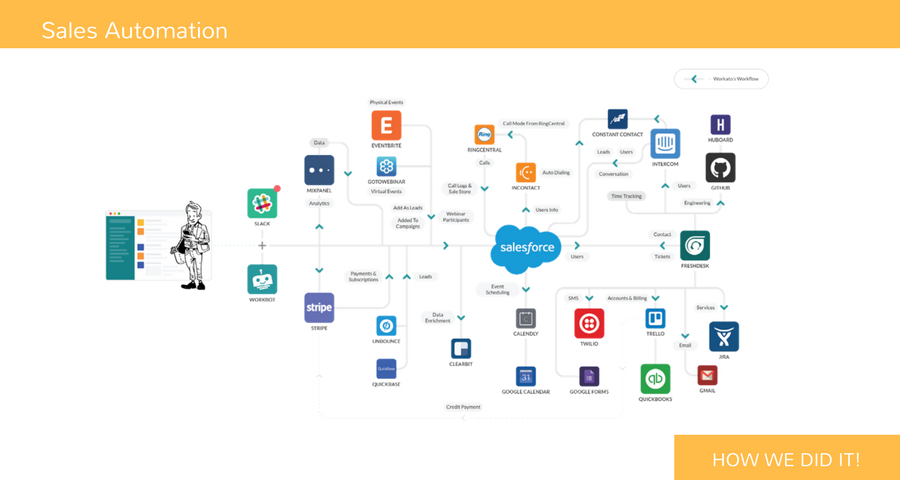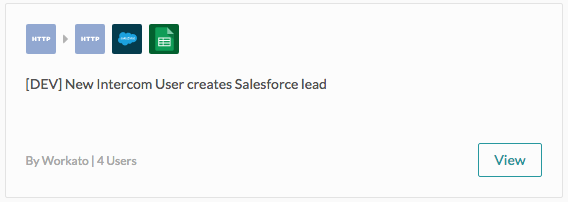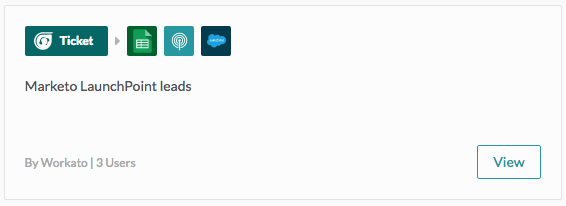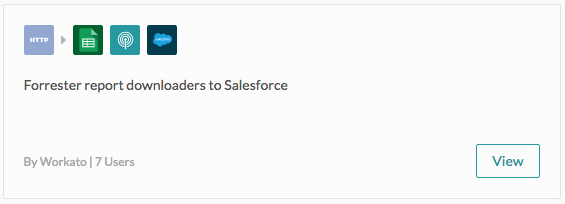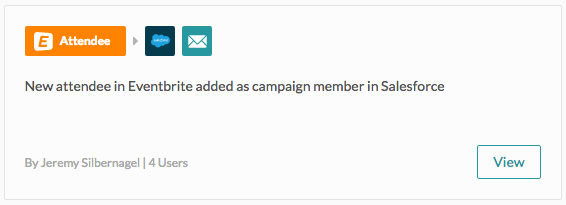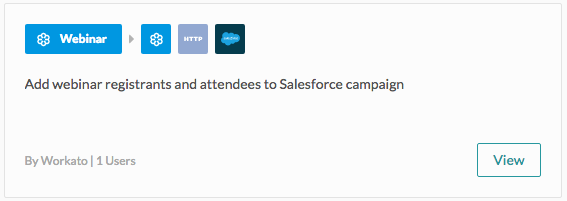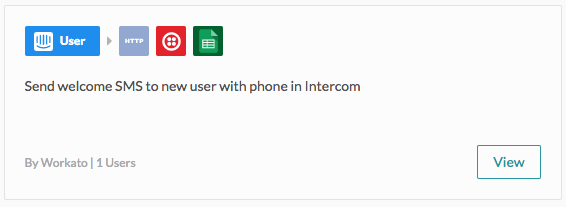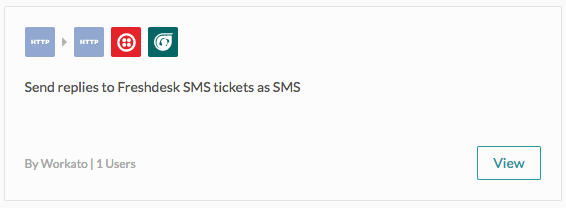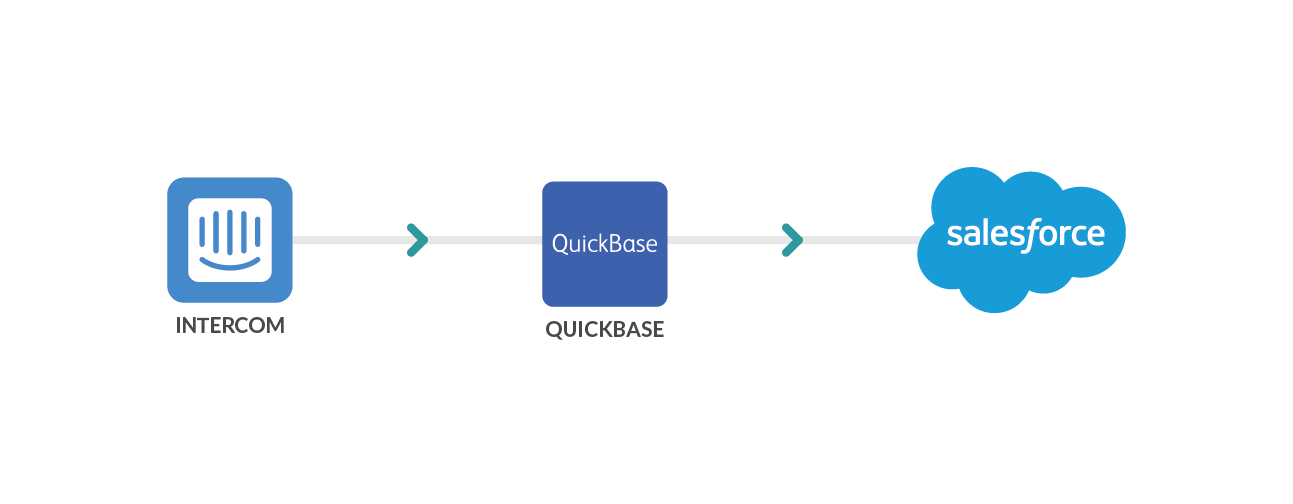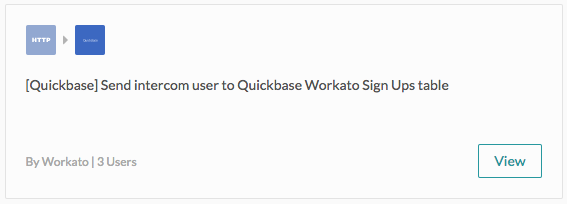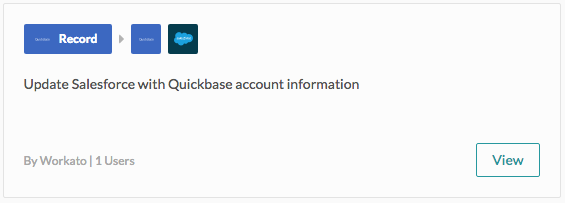This piece is part of our series Inside Workato’s Kitchen where we show you how we use our own product to automate each section of the business.
The process of lead gathering can fall into several different categories depending on how you structure your business — it may fall into the purview of traditional marketing roles and your sales team, or you could take a data-driven strategy such as hiring a growth hacker. Whatever structure you’ve chosen, lead gathering is an important part of any business model and acts as the driving force behind growing a business.
Once you have your leads, the next step is for the sales team to use these leads to convert interest into a full customer, but in order to do this the leads need to be in one place, ready to be contacted. They also need to be triaged, prioritized, tracked as customer touchpoints occur, and more. In order to make this as easy for the sales team as possible, your apps must work together. Otherwise, it will be difficult to hit sales goals as the team loses precious time on manual tasks.
Related: How automated lead generation workflows can transform the way your marketers operate
Common Sales Problems
- Fragmented leads meaning the leads are not automatically ready for the Sales Team to follow up on
- No 360° degree view of the customer as other information on them is trapped in other applications making the Sales team less informed
- No easy way to prioritize and triage leads
- No automatic alerts on where the customer is in their sales pipeline so follow up actions can happen immediately
- A manual quoting and signing process
- No easy way to on-board new customers when a Sales pitch is successful
- A slow process getting invoices signed and the money into your financial app
Here at Workato, our Sales Team experienced many of these problems as our leads come from several different sources and require the use of 10+ different cloud apps. We automated several processes to make our Sales Team as efficient as possible.
This chapter will cover the solutions we’ve created for the Workato Sales Team in the following categories:
- Automated opportunity data population
- Smart customer on-boarding
- 360° prospect and customer intelligence
- Lead Prioritization
- Automated prospect touchpoint alerts
- Streamlined quote and sign
- Order to Cash acceleration through automation
How Workato Solved This
Automated Opportunity Data Population
Syncing All Leads into Salesforce
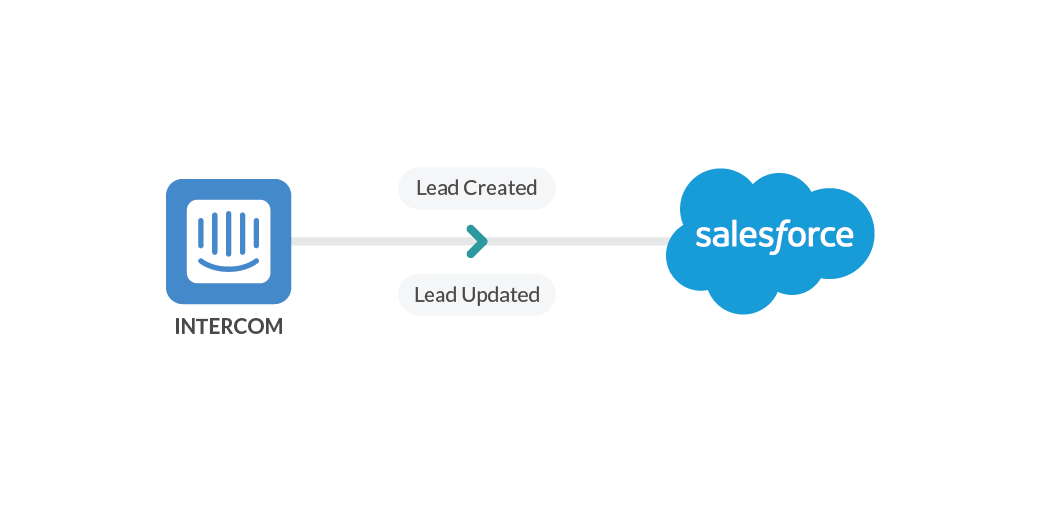
When we realized we needed this integration, the team found that effective integrations between Salesforce and Intercom did not exist. You either had to build a custom integration using Salesforce APEX code or buy a very expensive tool to do it. Because both Salesforce and Intercom allow a high degree of customizations, it’s difficult to comprehensively integrate the two. For example, in Intercom we track customer data like ‘Number of Recipes,’ ‘Number of Jobs’ etc. and we have custom fields in both Salesforce and Intercom that are required to map in our integration.
The high degree of customizations also complicated things when it came to duplicate prevention logic. When automating with custom fields and custom objects, you need to define logic based on those fields and how they interact with other data in their system. For example, in order to prevent any duplicates the sales automation needs to search for a lead based on four criteria: 1. A custom field in Salesforce called “Intercom User ID,” 2. a custom field called “User Email,” 3. another field called “Salesforce Email” and 4. by the user’s full name. It also needs to check if the contact already exists based on the same four fields mentioned above (Intercom User ID, User Email, Salesforce Email and Full Name). If any of the above fields match, the integration needs to update the contact/lead instead of creating a new one.
Workato easily handles Duplicate Prevention Logic but we needed a way to map one field to another that would ensure that duplicates would not be created based on a set of criteria that we choose. If any one of the criteria is met, the lead/contact should be updated instead of being created. In other words when there is a new user coming from Intercom into Salesforce, our integration needed to search contacts before searching for leads. If the contact is there, no lead should be updated or created. It also needed to search leads and Contacts in Salesforce to ensure that none of them have the same Workato User ID.
To ensure this level of customization, we created two Workato recipes to search/create leads/contacts in Salesforce whenever there is a lead or user is created/updated on Intercom.
Without this integration our sales team would be less productive due to context switching and wasting time logging in and out of apps. Automatically and dynamically moving all the necessary user data from Intercom to Salesforce saves our sales reps at least 1 hour per day each that would have been spent toggling between different applications. Those hours of work saved add up and Workato saves about $4000 per month in labor costs. With all the data ready to go in Salesforce, the sales team has more complete, consistent, and actionable information. When the sales team makes a call or reaches out to a lead, they have a full, 360 degree view of that customer’s user activity inside of Salesforce.
Syncing Marketing Leads into Salesforce
Our Marketing team uses several apps to generate leads such as Unbounce, Eventbrite, GotoWebinar, and our marketplace listings. We created several recipes to automatically add these leads to Salesforce and check to see if the lead already exists to avoid duplicates. You can find a more detailed account of this solution in Chapter 2.
By automatically routing the leads from the various marketplaces and marketing apps into Salesforce, Sales representatives do not have to manually create these leads inside Salesforce and Customer Service reps do not have to manually alert the sales team when a new ticket comes in. This saves everyone time and allows for a fastest follow up by the sales team. It also means we don’t need the reps to worry about monitoring multiple apps which reduces work space clutter.
Smart Customer On-Boarding
Automatically Sending SMS Messages with Intercom, Twilio, and FreshDesk
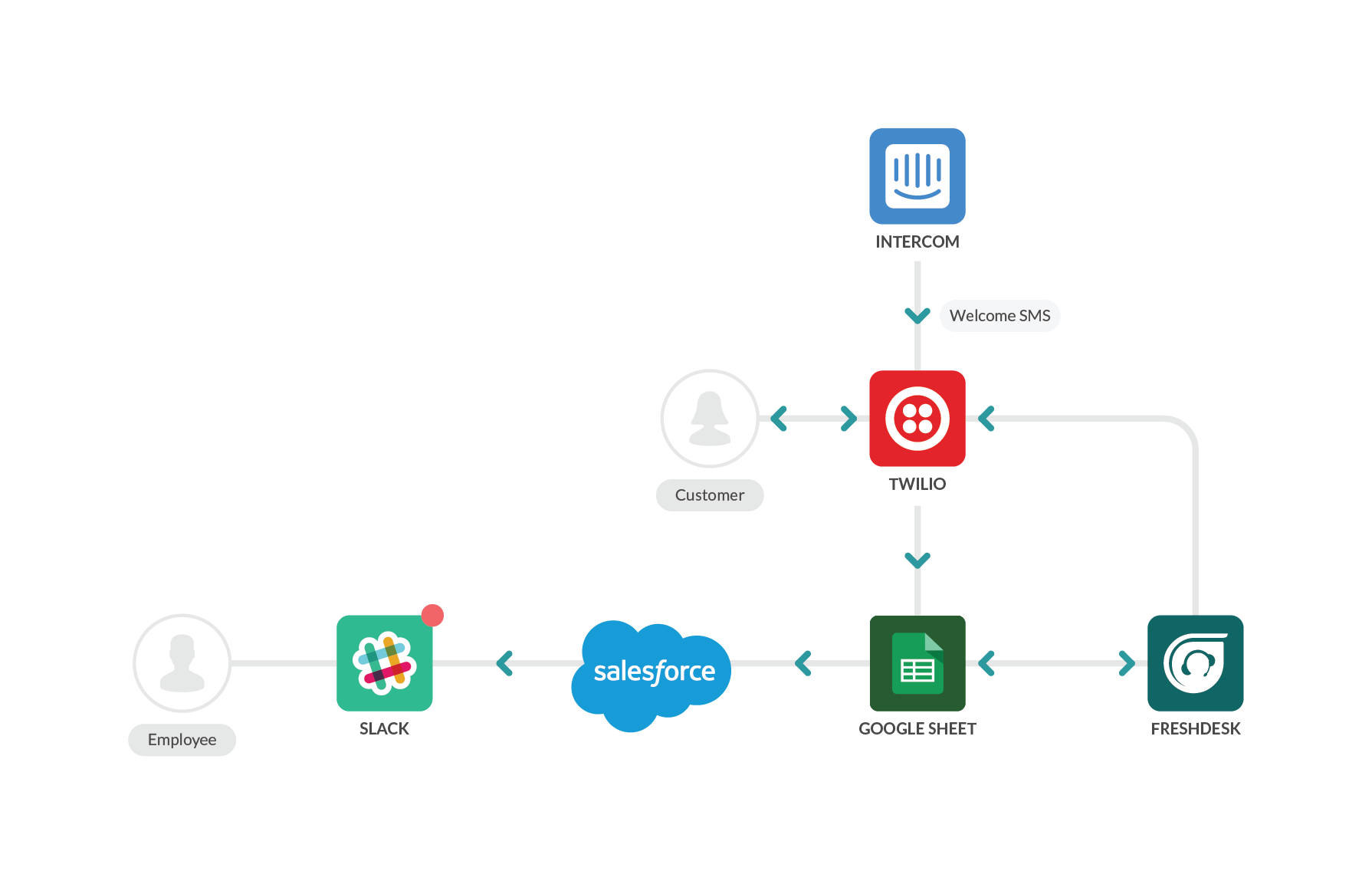
To get the sales process started immediately, we wanted to send out an SMS message to new users automatically. After we send the welcome SMS, our customer service reps need triage the message and assign it to the correct group. If the message needs to go to Sales, the sales team then needs a way to easily communicate via SMS with leads who reach out. To set this up, we needed a way to automatically send the welcome SMS, then create an easy method for the Sales team to reply to SMS replies without having an individual with a physical cell phone. These SMS replies needed to be assigned to a group and not a specific sales agent. Our reps also needed the ability to connect the SMS replies with the corresponding Freshdesk ticket and the corresponding customer on Workato.
We created 3 recipes to complete all of these tasks, helping both the Sales and Customer Service teams easily SMS with customers. The first recipe automatically sends the text message via Twilio when a new user is added to Intercom.
1. When a new user registers on Workato, their data is sent to Intercom. If they have provided a phone number, this recipe will automatically send a welcome SMS to the new user via Twilio, then update the Google Sheets Record.
The other two recipes were covered in the Customer Service chapter on page 14. One recipe posts SMS replies on Freshdesk and another recipe to allow Sales Agents to reply via SMS message in the same Freshdesk Ticket, both keeping the Google Sheet up to date.
2. This recipe for Inbound SMS creates or updates a Freshdesk Ticket when Twilio receives an SMS as well as updating Salesforce and posting a message to Slack. This allows the customer service team to view the message without leaving Freshdesk so they can assign it to the correct party.
3. This recipe for Outbound messages allows the Sales Team or whoever was assigned the message to reply to the customer straight from FreshDesk instead of using a physical mobile phone.
Sending an SMS message automatically gets the conversation started and helps us be attentive to our new customers, letting them know that we are there and ready to help. Thanks to the recipes that bring the messages into FreshDesk and send SMS from FreshDesk, the rep does not have to do any extra work to send a response.
Making SMS text messages an easy option for both our leads and our sales team by integrating Intercom, Twilio, and Freshdesk allows for more personalized interaction with customers. In fact, some customers prefer texting us instead of going to Workato.com to Live Chat or submitting a ticket on Freshdesk. The sales team also benefits from the ease of SMS because they can reply SMS from Freshdesk without having to go to a separate platform or worrying about logging the conversation.
Partner On-boarding: Partner Information from QuickBase into Salesforce
This solution works with the recipe in Customer Service under “Partner On-Boarding with QuickBase and Slack” on Page 16.
To do this, Workato Sales Agents had to gather information on individual QuickBase accounts, requiring them to log into QuickBase, search for the relevant information and manually add it to Salesforce. This not only wasted time, but also left room for error, resulting in a bad customer experience for new QuickBase sign ups. We knew we needed to automate this process so leads coming from our partners could have a seamless onboarding experience, however QuickBase and Salesforce are both highly customized apps. For this reason, there were no existing integrations that could handle our custom objects and fields available.
To solve this, we created a Workato recipe to automatically pick up the segment of users using the Workato QuickBase connector from Intercom and send it to QuickBase:
Once Workato has fed QuickBase the accounts we want to know about, our second recipe updates the Salesforce Lead or Account Information whenever there is an update from QuickBase:
Now, Workato automatically provides QuickBase with a specific list of customers using the Workato QuickBase connector from Intercom. Then, based on their email address, QuickBase provides Workato information about their account (i.e. number of users, QuickBase Plan etc.). This makes it easy for sales reps to see their QuickBase plan without ever leaving Salesforce and provides a smooth onboarding experience for the customer.
